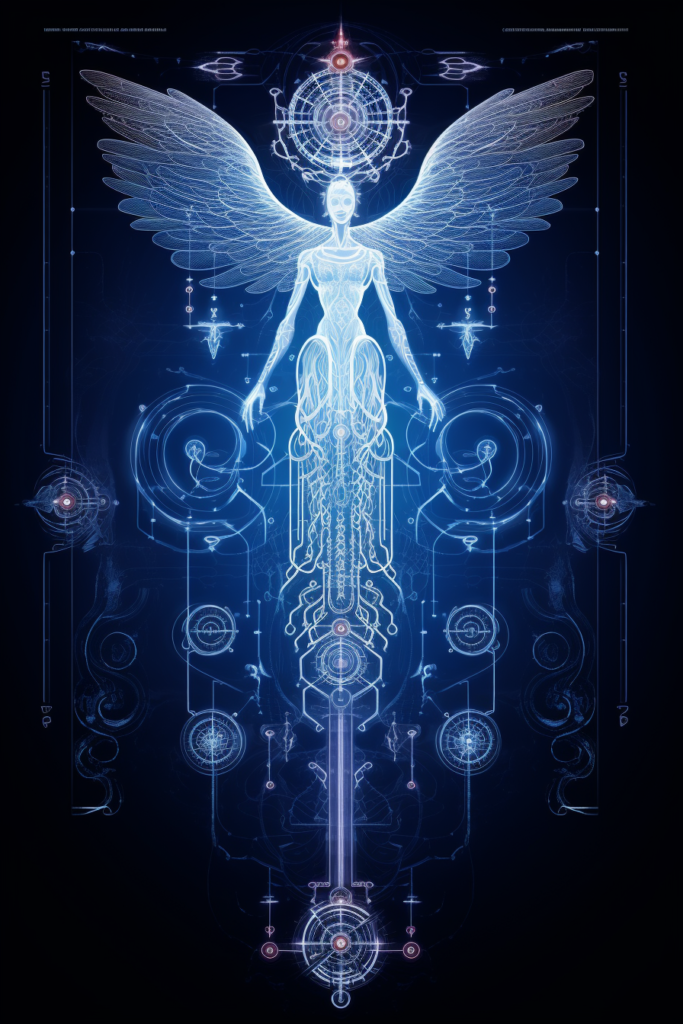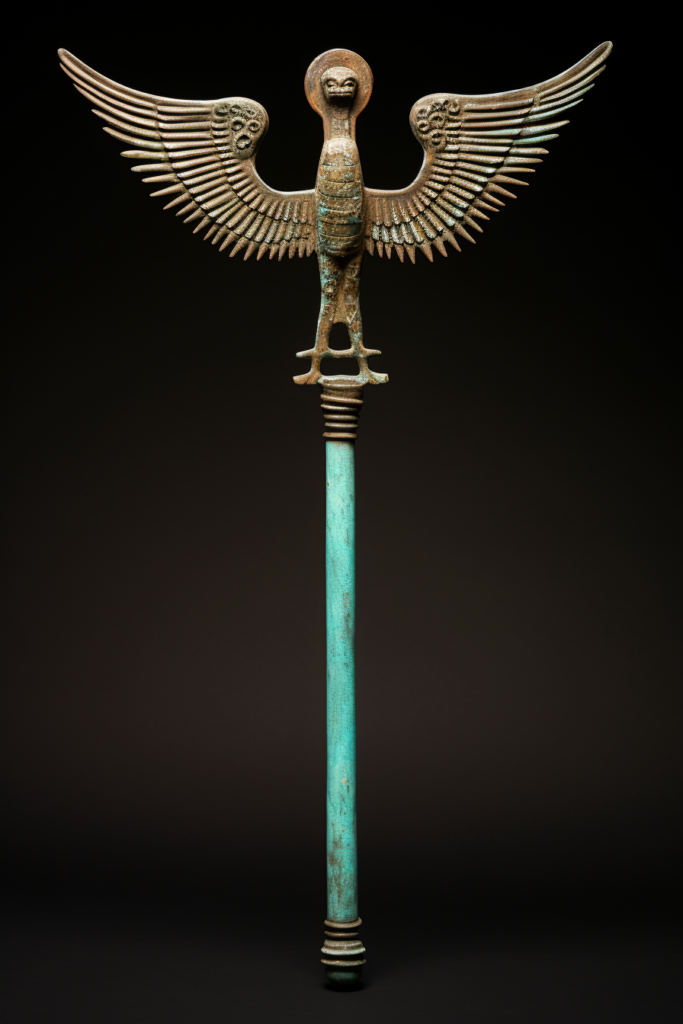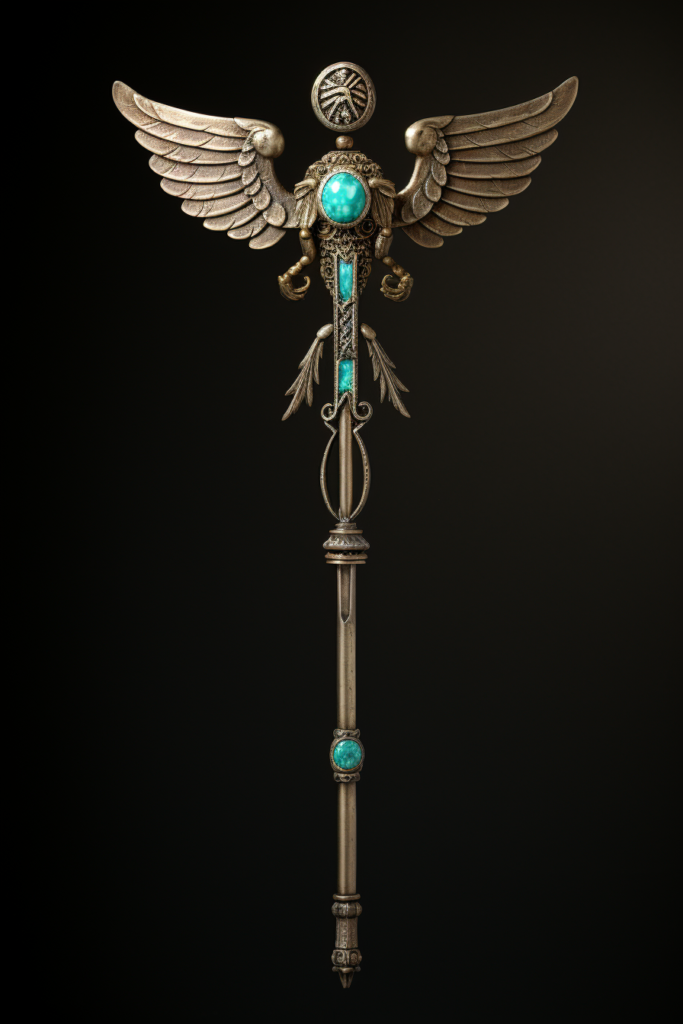Introduction:
Hermeticism, an ancient philosophical and spiritual tradition, has captivated the minds of seekers for centuries. Rooted in the teachings of the legendary Hermes Trismegistus, the principles of Hermeticism offer profound insights into the nature of the universe, the self, and the interconnectedness of all things. At the heart of this esoteric tradition lies a powerful symbol, the Caduceus, which serves as a key to unlocking the secrets of Hermeticism. In this article, we will delve into the significance of the Caduceus and explore its profound implications within the realm of Hermetic philosophy.

The Symbolism of the Caduceus:
The Caduceus, often associated with Hermes, the Greek god of communication, commerce, and divine messenger, consists of a staff with two intertwining serpents and a pair of wings at the top. This symbol has deep symbolic significance, representing various aspects of Hermetic philosophy.
- Unity of Opposites: The intertwining serpents on the Caduceus symbolize the concept of unity of opposites, a fundamental principle in Hermeticism. The serpents, often depicted as one masculine and one feminine, represent the interplay between polarities such as light and dark, male and female, and active and passive forces. This duality is seen as necessary for the harmony and balance of the universe.
- Balance and Equilibrium: The Caduceus also signifies the pursuit of balance and equilibrium. The serpents, entwined around the staff, represent the unification and harmonization of opposing forces, indicating the need for balance in all aspects of life. This balance is essential for personal growth, spiritual development, and the attainment of higher states of consciousness.
- Transformation and Healing: The Caduceus holds deep associations with healing and transformation. The intertwining serpents are often associated with the Kundalini energy, a powerful spiritual force represented by a coiled serpent at the base of the spine. The ascent of the Kundalini energy through the chakras leads to spiritual awakening and transformation. In this sense, the Caduceus represents the alchemical process of transmutation and the healing of the mind, body, and spirit.
- Communication and Integration: Hermes, the god associated with the Caduceus, is known as the divine messenger who facilitates communication between the realms. The wings atop the staff represent the transcendent nature of the mind and spirit, symbolizing the ability to transcend limitations and connect with higher realms of consciousness. The Caduceus, therefore, signifies the importance of communication, integration, and the unification of diverse elements within oneself and the world.

The Caduceus and Hermetic Philosophy:
In Hermeticism, the Caduceus serves as a potent metaphor for the underlying principles and practices of the tradition.
- The Principle of Correspondence: As above, so below; as within, so without. This core principle of Hermeticism suggests that the microcosm reflects the macrocosm, and vice versa. The intertwining serpents on the Caduceus embody this idea, representing the interconnectedness and correspondence between different levels of reality. By understanding the patterns and relationships between various phenomena, Hermetic practitioners gain insight into the universal laws governing the cosmos.
- The Principle of Mentalism: The Caduceus, with its wings symbolizing the mind, highlights the significance of the mental realm in Hermetic philosophy. According to the principle of mentalism, the universe is fundamentally mental in nature, and consciousness plays a central role in shaping reality. By developing and harnessing the power of the mind, individuals can consciously create their own destinies and align themselves with the divine will.
- The Alchemical Journey: The Caduceus, as a symbol of transformation and healing, aligns with the alchemical journey of the adept. In Hermetic alchemy, practitioners undergo a process of purification and transmutation, symbolized by the serpent’s ascent along the staff. This journey involves the integration of opposing forces, the purification of the self, and the attainment of spiritual enlightenment.

Unlocking the Secrets of Hermeticism:
The Caduceus serves as a profound tool for those seeking to unlock the secrets of Hermeticism. By contemplating its symbolism and applying its principles in their lives, individuals can gain a deeper understanding of the nature of reality and their place within it. The Caduceus reminds us of the importance of balance, unity, transformation, and communication in our personal and spiritual growth.

Conclusion:
The Caduceus, with its intricate symbolism and rich associations, stands as a powerful key to unlocking the secrets of Hermeticism. As a representation of unity, balance, transformation, and communication, this ancient symbol guides seekers on their journey towards self-discovery, spiritual evolution, and the realization of universal truths. By embracing the wisdom encapsulated within the Caduceus, individuals can embark on a transformative path that aligns them with the profound teachings of Hermetic philosophy.
